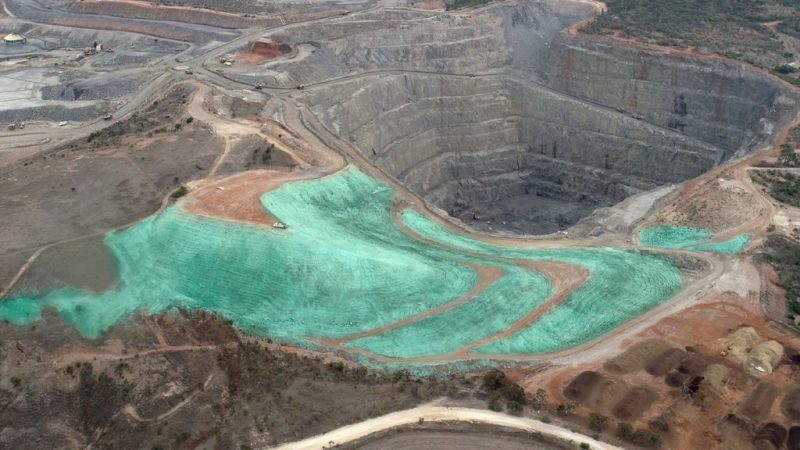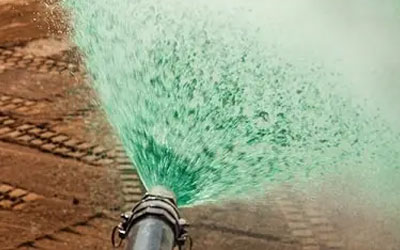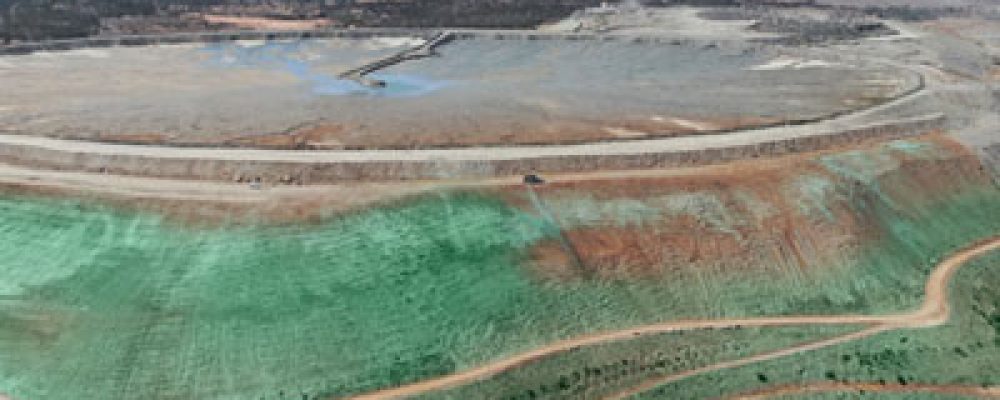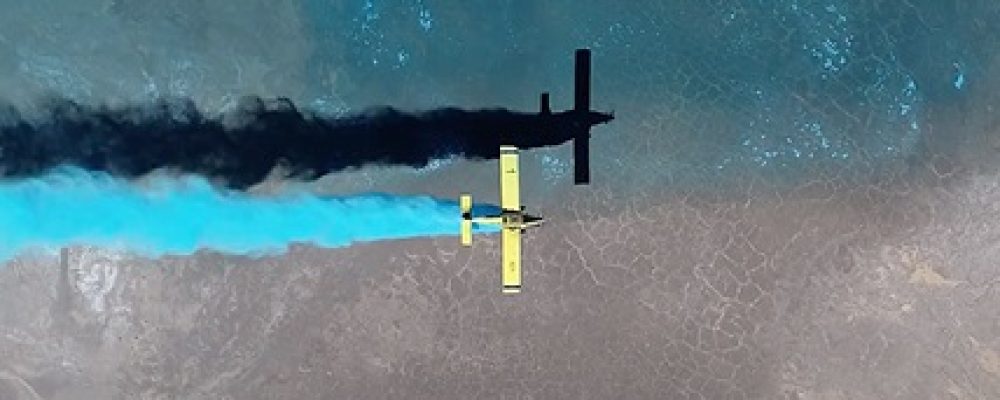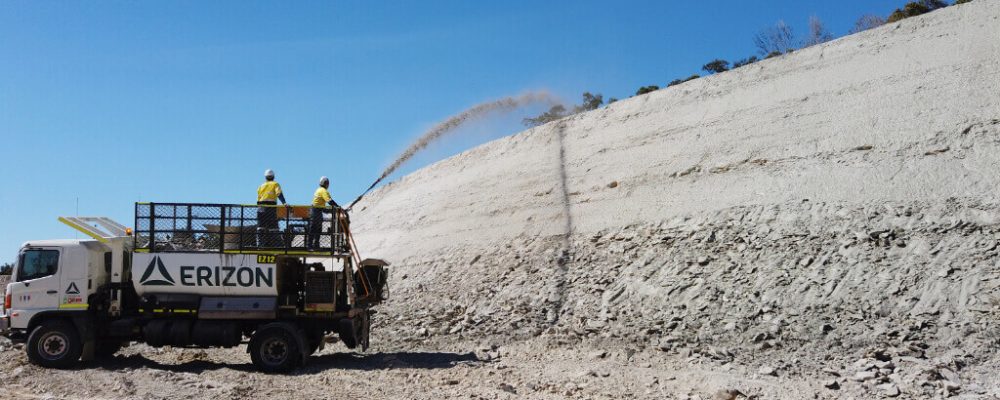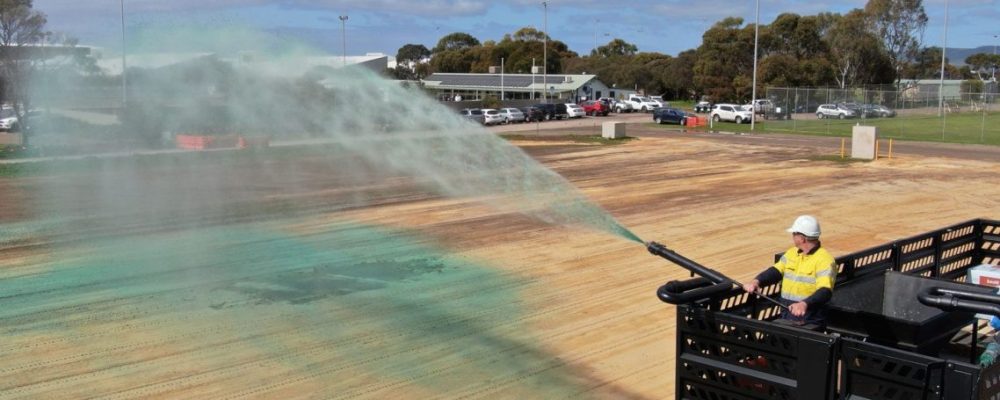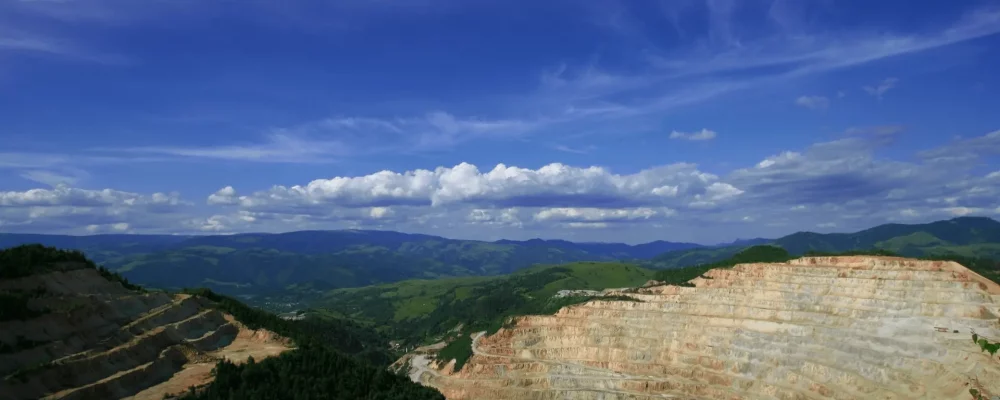Soil erosion is one of our planet’s most serious environmental issues. It occurs when the soil gets washed or blown away, leaving the land stripped and barren. This phenomenon leads to decreased soil fertility and can eventually cause severe damage to local ecosystems.
7 Types Of Soil Erosion
There are many types of soil erosion, each with its unique causes and consequences.
Some of the most common forms of soil erosion include sheet erosion, wind erosion, splash erosion, rill erosion, gully erosion, tunnel erosion, and stream bank erosion.
1. Sheet Erosion
Sheet erosion is one of the most common types of soil erosion and occurs when thin layers of soil get washed or blown away. Heavy rains, strong winds, and other natural events cause sheet erosion and often lead to increased soil runoff and loss of nutrients.
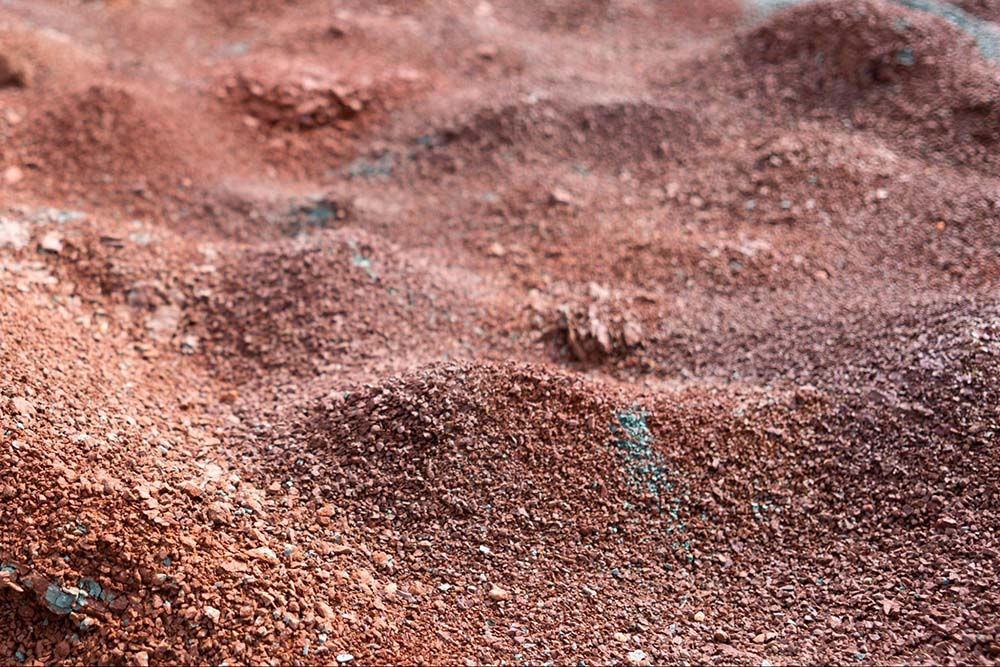
2. Wind Erosion
Wind erosion occurs when the wind picks up soil particles and carries them across vast distances, depositing them in other areas. While this may seem natural, human activities such as ploughing and overgrazing can make the soil much more susceptible to wind erosion.
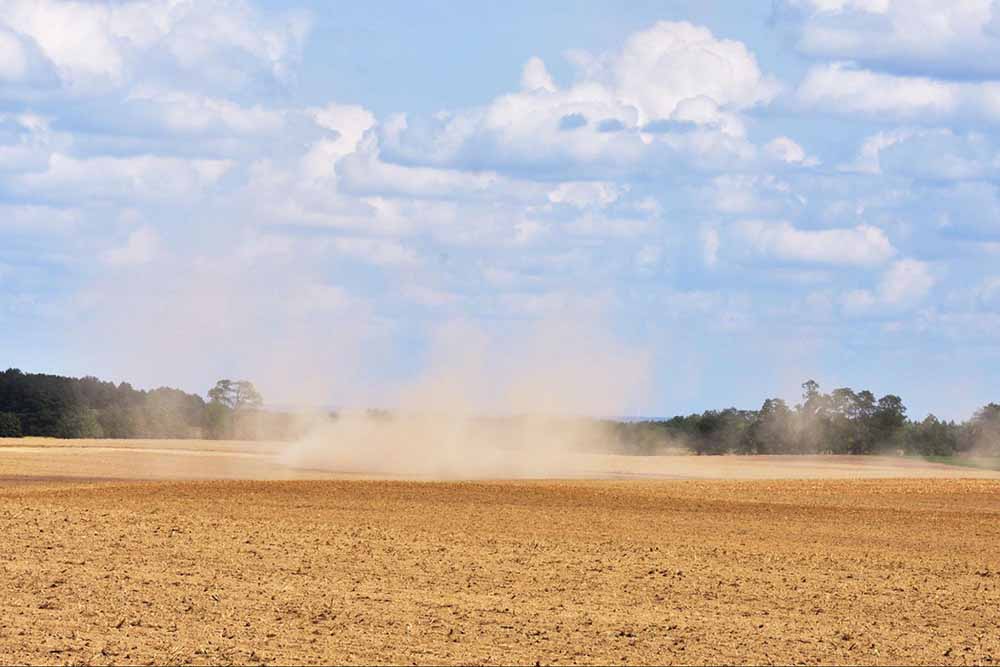
3. Splash Erosion
Splash erosion occurs when raindrops or other forms of precipitation “splash” soil particles into the air. We often see this type of soil erosion in mountainous areas where the soil is more easily disturbed by heavy wind and rain. Splash erosion can also occur on farmland which causes soil loss and increased nutrient runoff.
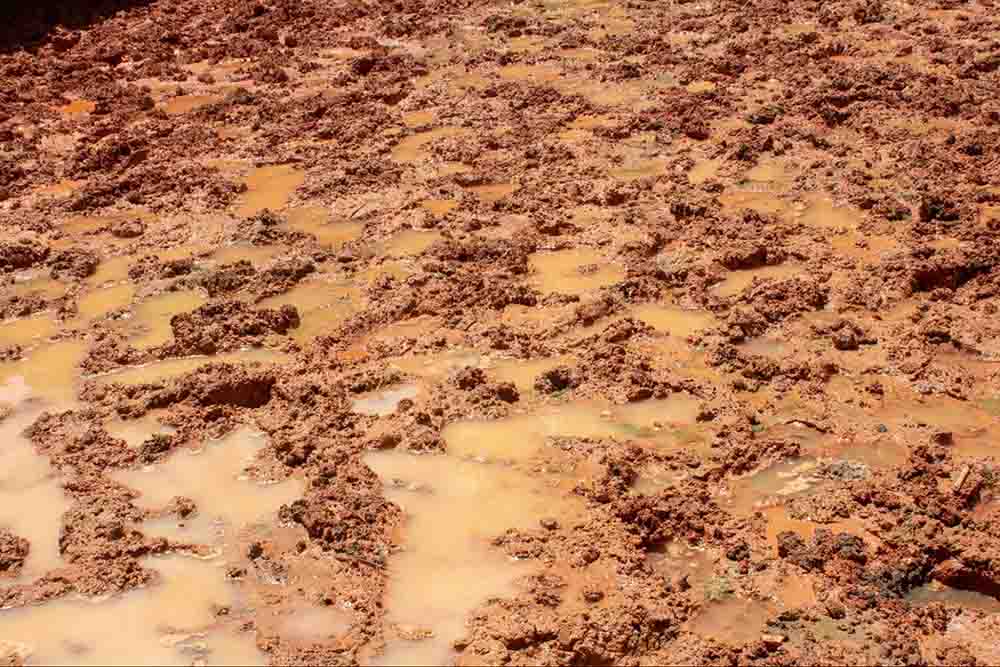
4. Rill Erosion
Rill erosion, another common form of soil erosion, occurs when water runoff or other disturbances form small channels in the soil. We can typically see this type of erosion on farmlands where ploughing and different kinds of cultivation damage the ground.
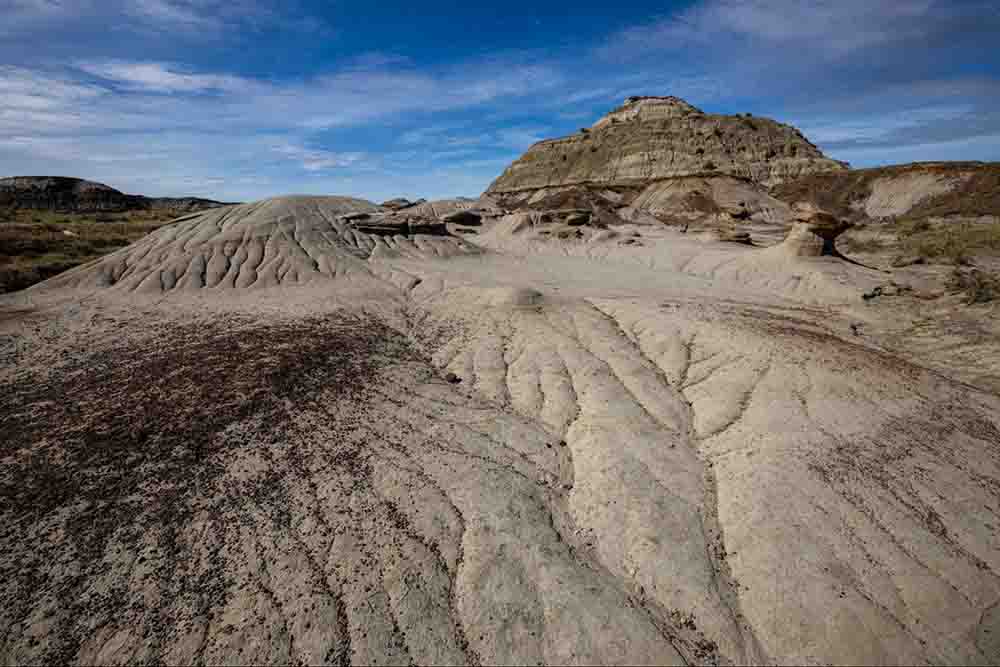
While rill erosion can lead to soil loss and decreased soil fertility, there are steps that farmers can take to minimise its impact.
5. Gully Erosion
Gully erosion is a more severe form of soil erosion. It occurs when fast-flowing streams or rivers carve deep trenches into the soil, leaving behind steep walls that are highly unstable and easily eroded. This type of soil erosion is particularly damaging, as it can contribute to flooding and soil loss on a large scale.
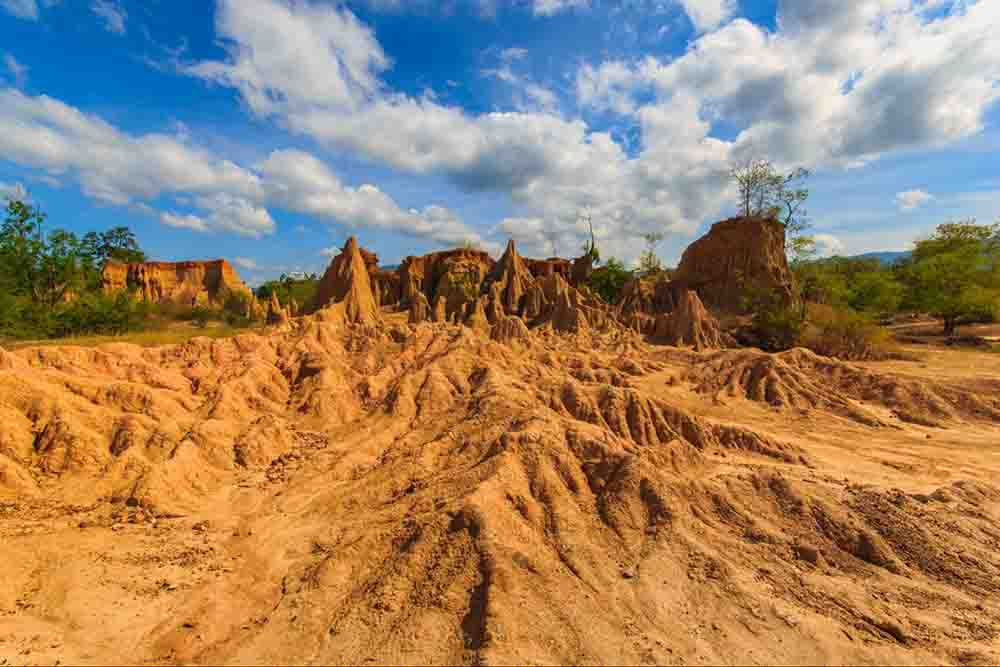
6. Tunnel Erosion
Tunnel erosion occurs when large blocks of soil get eroded beneath the soil’s surface, leaving behind deep underground tunnels that can cause the ground above to collapse. While this form of soil erosion may not be immediately apparent, it can devastate local ecosystems and infrastructure.
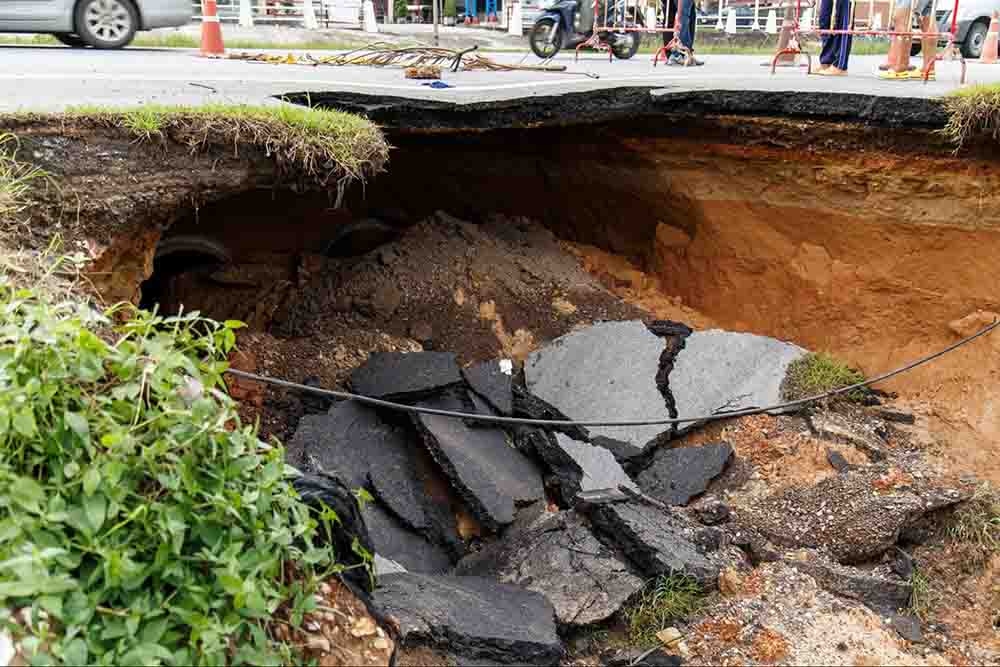
7. Stream Bank Erosion
Stream bank erosion is another primary form of soil erosion caused by the natural processes of streams, rivers, and other bodies of water. As these waters move over parcels of land, they often carry sediment or debris that can damage or alter the surrounding banks.
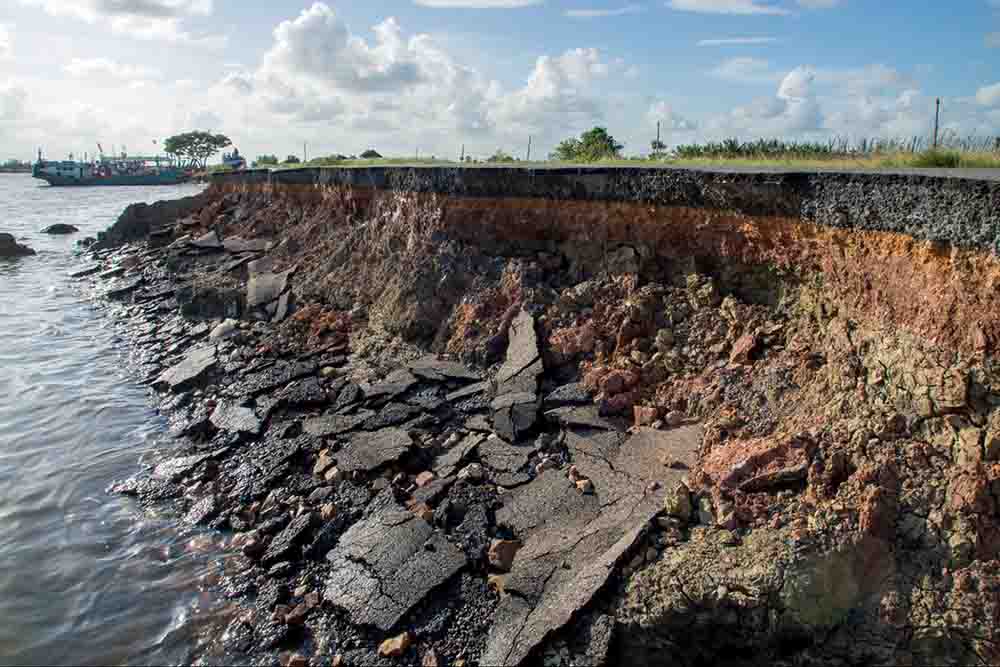
Keeping rivers and streams free from pollution and runoff will help to prevent stream bank erosion and minimise its damaging effects.
While soil erosion is a complex problem that requires the coordinated efforts of scientists, policymakers, and landowners alike, there are some simple steps that everyone can take to help prevent further soil loss and degradation.
Practices such as using soil conservation on farms and ranches, reducing runoff from construction sites, and planting native vegetation along stream banks can protect our soil resources from degeneration.
5 Factors That Influence The Severity Of Soil Erosion
Soil erosion can have an immense impact on our environment, and if left unchecked, it can be devastating.
What are the factors that influence soil erosion rates? This question is tricky, as soil erosion levels can vary based on region and environment.
Factors such as climate change, soil type, land use management practices, the slope of the terrain, and vegetation cover can affect the severity of soil erosion.
1. Steepness Of Slope
Soil erosion rates can be high, particularly on steep slopes, where soil particles tend to get dislodged and carried away by wind or water. For this reason, soil conservation practices like terracing and contour ploughing effectively reduce soil loss on sloped terrain.
2. Climate
Climate also significantly influences soil erosion rates. In drier climates with higher winds and less precipitation, soil erosion rates are typically higher due to increased exposure of soil particles to the elements.
Similarly, regions that receive heavy seasonal rainfall will often see higher soil erosion levels during wetter periods, when soil is more easily disturbed and washed away.
3. Land Use And Management Practices
Land use and management practices also substantially impact soil erosion rates. Ploughing fields can lead to increased soil loss, while conservation strategies, like planting cover crops, can help to slow down soil erosion rates and protect soil quality.
We should always endeavour to make land use decisions with soil preservation in mind.
4. Soil Characteristics
Soil has many unique attributes that can affect erosion. Those with lower levels of organic matter and less-than-stellar structural stability are more prone to this phenomenon than soils with well-balanced constituents. Understanding soil characteristics is essential to getting a better grasp of soil erosion.
5. Vegetation Cover
With soil erosion rates, vegetation cover is one of the most influential factors. Areas with high vegetation coverage experience less soil erosion because the root system provides stability and soil aggregation, while regions with decreased soil coverage exhibit higher levels of soil erosion.
Sometimes, extreme soil erosion can occur from the removal of plants or the lack of proper maintenance—as the soil does not have an anchor to keep it in place. Maintaining a green cover for soil is usually an easy feat that can significantly reduce soil erosion rates.
What Causes Soil Erosion?
There are many causes of soil erosion, and understanding these underlying issues can help us better protect our soil.
Natural Causes Of Soil Erosion
Natural causes of soil erosion include extreme weather events such as hurricanes and heavy rainfalls that loosen soil particles, allowing floods and streams to wash them away. Other forms of wind and water flow, such as waves and tides, can also lead to soil erosion over long periods.
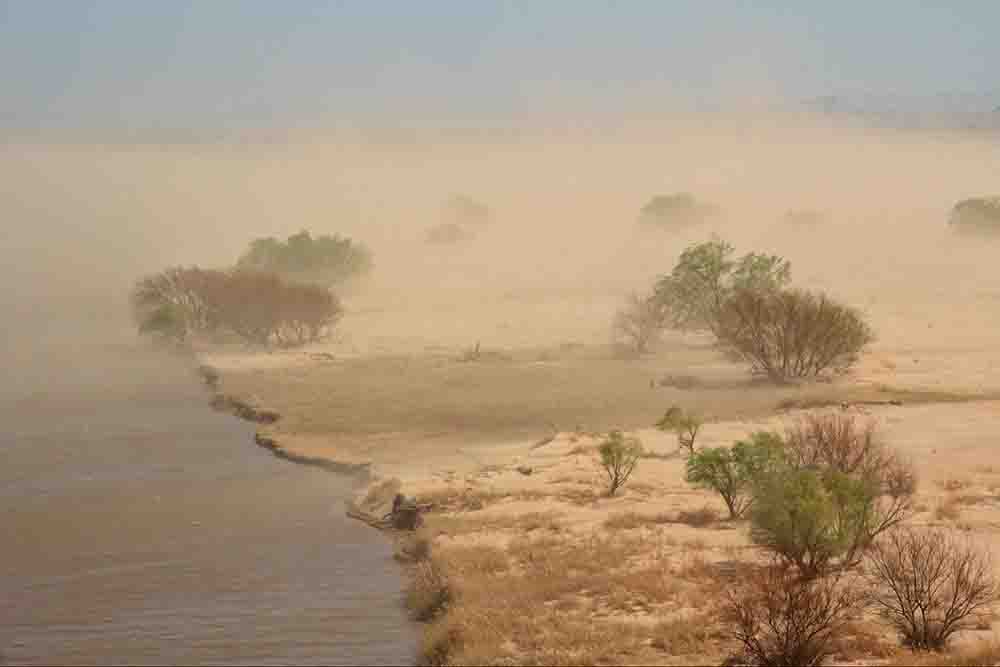
Man-Made Causes Of Soil Erosion
Human practices have also been a significant cause of soil erosion through unsustainable agricultural techniques like over-tilling, land clearing to make room for more development in growing cities, deforestation for timber profits, industrial pollution, and uncaring builders who strip hillsides of plant life.
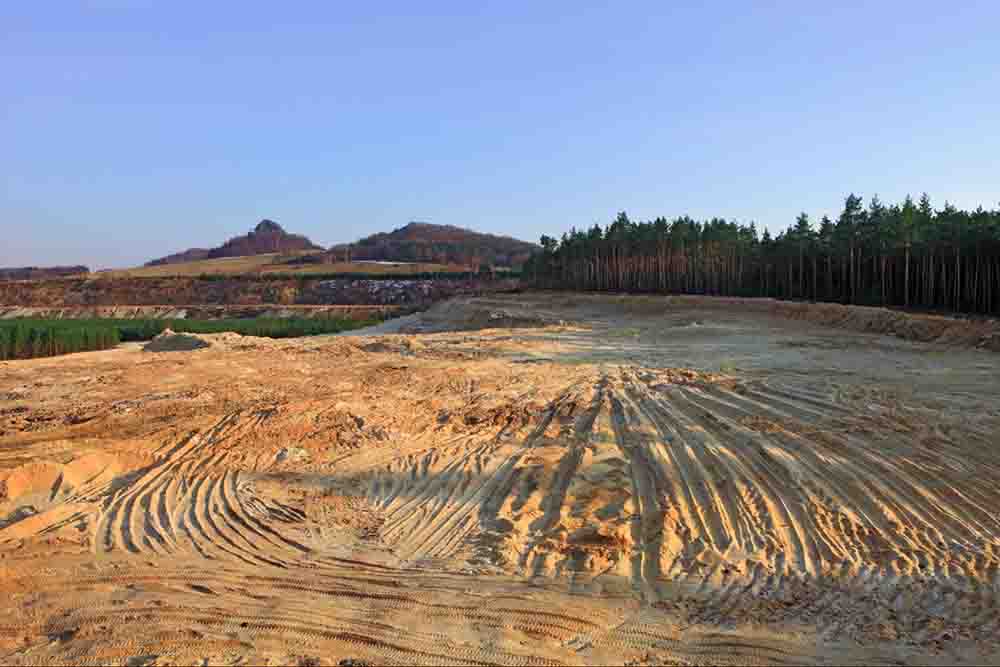
These are all rooted in situations where people don’t think about their actions, potentially leading to soil erosion, which could have easily been preventable. Taking a moment to consider where soil ends up when we conduct our business is the first step to protecting it–and keeping the ground where it should be: beneath our feet.
The Effects Of Soil Erosion On The Environment And Its People
The long-term effects of soil erosion can be especially damaging to agriculture and food production. When soil erodes, it decreases quality and productivity, reducing crop yields.
Additionally, when wind or water activities erode soil, its fertility decreases, further affecting its ability to support vegetation growth. Not only does this reduce the availability of crops for local populations, but it also causes a decrease in biodiversity, which affects the ecosystem balance.
Besides reducing crop yields, soil erosion can lead to other environmental problems such as increased sedimentation levels in rivers and streams, disruption of fish spawning habitats, destruction of wetlands and different habitats for wildlife species, and contamination because of the leaching out of nutrients into bodies of water.
What compounds all these issues is that once human activities like deforestation or overgrazing have eroded the topsoil away, nothing can replace it naturally. Meaning that even if local groups or communities take land management measures afterwards to prevent further damage, it will still take years before any significant recovery occurs.
Not only does soil erosion negatively affect our environment, but it also directly impacts people’s livelihoods – particularly those who rely on farming and agricultural-based economies. Poor quality soil can result in reduced crop production, threatening food security for communities already facing poverty and malnutrition.
This scenario is especially true for developing countries, whose populations depend heavily on subsistence farming practices for survival. Further economic losses occur because of factors such as the costs associated with restoring degraded soils into usable farmland, such as putting in nutrient-rich amendments.
Ultimately, preventing and reducing soil erosion is essential for preserving our environment, for our benefit and for future generations. Not doing so can cause devastating consequences, including loss of biodiversity or habitat degradation, decreased crop yields or food insecurity, and negative impacts on livelihoods or economies.
To protect against these potential risks, we must implement effective management strategies focusing on sustainable farming practices. Such practices as cover cropping, no-till agriculture, and conservation tillage are worthwhile efforts.
We should also work towards restoring damaged soil through remediation efforts like reforestation projects or terracing slopes while aggressively educating local communities about smart land use practices.
Challenges In Reducing Soil Erosion Impacts
Reducing the impact of soil erosion is one of the most important environmental challenges of our time. Soil erosion negatively affects land fertility, increases flooding and landslides, decreases water quality and quantity, and contributes to climate change.
Addressing this issue requires awareness, communication, collaboration, and adequate funding for soil conservation efforts.
Education is an essential tool in preventing and reducing soil erosion impacts. It helps to increase awareness among different stakeholders of the importance of soil conservation and its effects on society.
For example, educating farmers about sustainable agricultural practices can help them reduce their environmental impact by improving crop rotation techniques and mulching. These techniques could lead to improved yields while also reducing soil erosion.
Similarly, educating communities about natural resource management can help them understand how best to use resources sustainably while protecting land from erosion. These efforts can be supported by providing local communities with resources such as seedlings or saplings to promote reforestation projects or terrace farming systems that help prevent soil loss.
Furthermore, communication is essential in tackling the challenges posed by soil erosion. It enables all stakeholders—from governments to non-governmental organisations (NGOs), local communities, farmers, and individuals—to share information on interventions and work together towards a common goal.
Communication between stakeholders also ensures that they use resources efficiently and equitably so that everyone benefits from any proposed initiatives. It also encourages collaboration among government units, researchers, citizens, and other stakeholders to develop better policies addressing environmental degradation and poverty reduction.
Collaboration is key for the successful implementation of strategies aimed at reducing the impacts of soil erosion. Governments need the support of local communities for the successful implementation of policies.
For example, governments may provide farmers with subsidies for implementing sustainable agricultural practices such as reduced tillage or conservation agriculture. Still, these measures will only be effective if farmers cooperate.
NGOs often play an essential role in facilitating collaborations between stakeholders and providing technical help when needed.
Australia’s Sustainable Land Management Policies
Australia has long stood as a global leader in sustainable land management practices. Its policies ensure responsible and sustainable natural resources management while benefiting people, communities, and businesses.
To achieve this goal, the Australian government has implemented a range of initiatives to achieve greater land management efficiency and improve agricultural productivity.
1. The National Landcare Program
Australia’s Sustainable Land Management policies and the National Landcare Program (NLP) seek to create a more sustainable and productive landscape for future generations.
The NLP has been in effect since 1989. Its core objectives focus on environmental protection, improved outcomes for landholders and partners, better management of natural resources, community engagement, and capacity building.
The Australian government primarily funds the program. It works with local state governments and non-government organisations, such as farmers, Indigenous Australians, and other stakeholders, to ensure sustainable rural area management.
This program also works closely with universities, research centres, and other knowledge producers to ensure the development of best-practice land management techniques.
2. The Soil And Land Conservation Act of 1945
Australia has a long-standing commitment to sustainable land management, embodied in the Soil and Land Conservation Act of 1945.
It created this landmark legislation to protect valuable agricultural soils and conserve Australia’s natural resources while allowing for responsible development. Since then, implementation has ensured that our lands remain productive and well-managed.
The first step in Australia’s sustainable land management policy is ensuring minimal soil erosion. To this end, it encourages farmers to use crop rotation, contour ploughing, and terracing practices to reduce the impact of livestock grazing and other activities on the landscape.
In addition, conservation tillage is becoming increasingly popular among Australian farmers. This practice involves minimal disruption of the soil surface layer, reducing runoff and preserving essential nutrients in the soil.
Another critical component of the sustainable land management policy is supporting biodiversity protection and improving water quality.
The Australian government has established strict regulations to protect native plants, animals, and ecosystems; these include restrictions on clearing native vegetation for agricultural purposes or pollution from manufacturing activities.
Further initiatives encourage farmers to implement more efficient irrigation methods and incorporate water-efficient technology into their operations. These measures help maintain soil moisture levels throughout the country and prevent runoff from contaminating nearby waterways.
3. Caring For Our Country
The Caring for Our Country initiative is integral to Australia’s commitment to sustainable land management. The program brings industry, community, and government partners to work collaboratively on long-term environmental stewardship.
It encourages innovation in developing tools and strategies that enable effective natural resource management and achieve ecologically sustainable development outcomes.
Projects funded by Caring for Our Country include revegetation of degraded landscapes, restoration of wetlands, reducing soil salinity, biodiversity conservation, improved water quality in catchment areas, and habitat protection for species at risk of extinction.
In addition to Caring for Our Country, the Australian Government has developed other initiatives to promote sustainable land management practices.
These initiatives include
- subsidies for farmers who adopt more environmentally friendly methods, such as reduced tillage or integrated pest management,
- financial incentives for businesses that reduce their carbon footprint
- grants for local communities looking to protect their environment
- education campaigns aimed at encouraging people to make informed decisions about their impact on the environment.
4. The Grains Research and Development Corporation (GRDC)
The GRDC works with farmers and researchers to identify ways to improve efficiency continually, reduce environmental risks, increase soil health, protect natural resources, and create economic opportunities for landholders.
A vital part of this work is understanding how climate change impacts Australian agriculture and finding solutions to keep the industry viable in a changing climate.
GRDC works towards sustainable land management by monitoring land conditions across Australia’s agricultural regions. This information helps identify potential risks, such as erosion or water quality issues, that landowners or other stakeholders can address quickly.
It also allows researchers to compare land management practices over time, track changes in soil health, identify areas most at risk of degradation, assess how existing techniques protect against degradation, and develop better techniques for other areas of Australia.
The GRDC also works with farmers on best-practice farming techniques that help reduce inputs while still producing high yields. These techniques include using cover crops, crop rotations, reduced tillage systems, and efficient irrigation methods that can help farmers increase their profitability while reducing the impact on natural resources like soil carbon and water availability.
5. The Greening Australia
Greening Australia is an environmental non-profit organisation working to restore and protect Australia’s fragile ecosystems since 1982. They dedicate their efforts to restoring natural habitats, tackling climate change, and creating a sustainable future for all Australians.
To do this, they focus on planting trees and vegetation, providing ecological restoration services, employing community volunteers, and educating the public about conservation and sustainability.
Greening Australia has produced millions of trees to restore vital ecosystems. By increasing the number of native trees, shrubs, and other plants in a particular area, they can bring back balance to disrupted habitats.
These initiatives help reduce soil erosion, provide shelter from wind and fire danger, improve water quality by filtering pollutants from runoff water into rivers or lakes and increase biodiversity by providing habitat for native wildlife.
The organisation also engages with communities to develop local projects that help improve their environment while promoting awareness of how people can help conserve land resources.
In addition to tree-planting initiatives, Greening Australia also advocates for governmental policy changes which protect our environment for future generations. They work with federal agencies like the Department of Environment and Energy and national parks authorities to ensure that the policies created benefit nature conservation.
Furthermore, the organisation works tirelessly to advocate for government funding to implement further projects that will further aid in preserving our precious resources.
Erizon’s 3 Most Successful Projects For Reducing Soil Erosion
Erizon is a leader in soil erosion prevention and has completed many successful projects. Here, we highlight three of the company’s most notable projects that have successfully reduced soil erosion and improved land health.
Sunshine Energy Park Revegetation
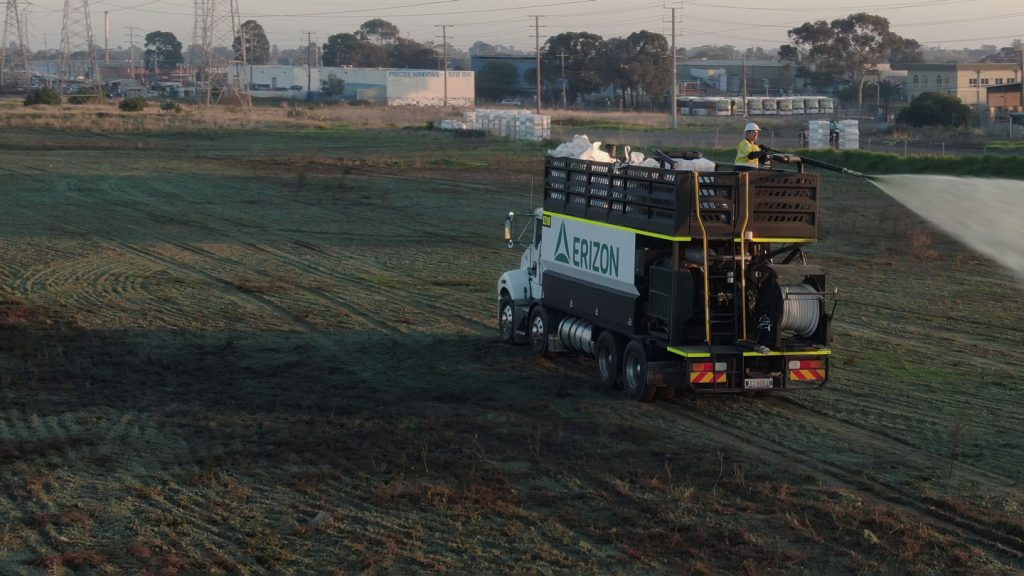
The Sunshine Energy Park, a former basalt quarry used for landfill purposes before being capped after closure, desperately needed revegetation. This work established a cover of low-maintenance grasses to protect the landfill cap from erosion and dust generation over the long term.
Initial soil testing of the area indicated a complicated soil structure with varied amelioration requirements. Some portions of the soil were extremely saline, while others were highly alkaline.
For the Sunshine Energy Park Revegetation project, we recommended using EnviroLoc BFM. The amendments improved the E horizon of the substrate, providing a better long-term outlook for vegetation growth. Combined with a tailored amelioration plan, it created an ideal growing foundation for seed germination.
The EnviroLoc wood fibres acted as an effective erosion control blanket, safeguarding the surface from wind and water damage and boosting moisture retention to stimulate optimum seed germination. This comprehensive approach meant that the affected area was now healthier than before and better equipped to sustain lush vegetation over time.
Additionally, since natural forces like wind and rain quickly displace soil particles, this erosion control blanket was especially beneficial in protecting delicate seedlings at their fragile early stages of development. Its water retention capabilities also allowed roots to develop farther into the soil, creating a vital anchor against future weather damage.
Fort Largs Temporary Dust Suppression
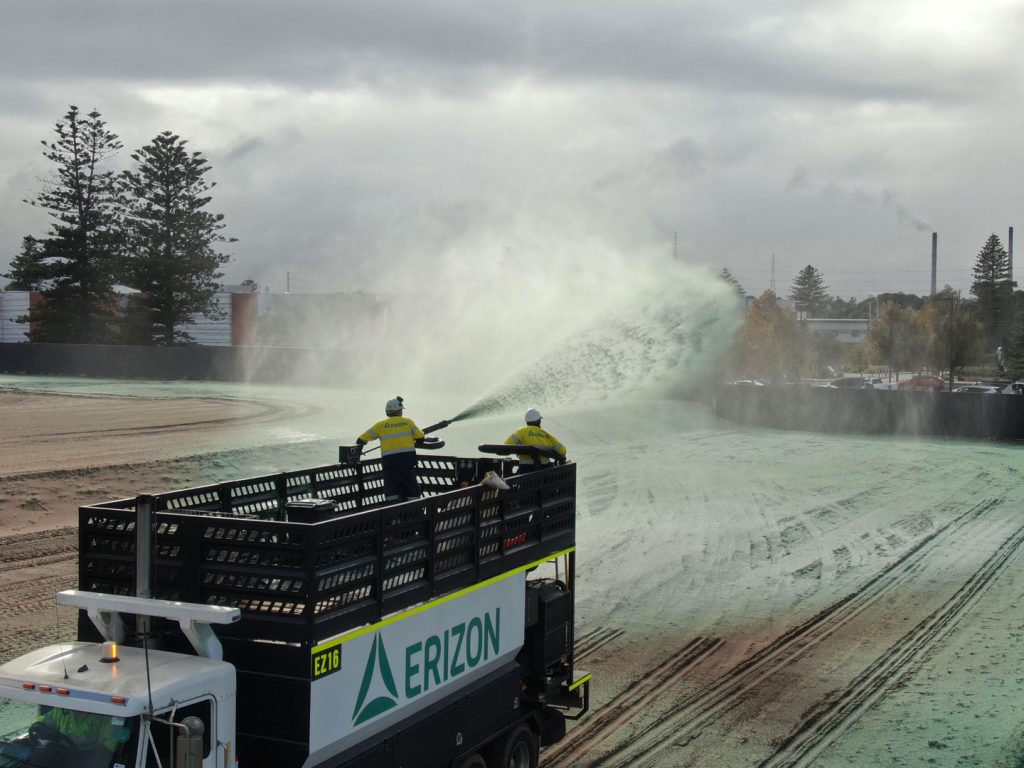
In the Adelaide suburb of Fort Largs, a brand-new neighbourhood is developing. Between October 2021 and April 2022, Mcmahon Services cleared the area by demolishing all structures, not on the National Register of Historic Places.
The schedule for the next phase of development began in the latter part of 2022, but the uncovered surface posed a dust risk owing to ocean winds.
Mcmahon Services approached us at Erizon to search for a dust suppression system well-suited to the predominantly sand-based ground of Fort Largs. The high-sodium level in its sand can quickly degrade more traditional polymer-based dust suppression treatments. Therefore, the need for a new approach arose.
After much analysis and study, Erizon came up with the following recommendation.
Dust suppression has never been easier than with FibreLoc, an innovative product developed using leading-edge science for extreme environments where traditional polymer solutions would fail. The organic wood fibres and eco-friendly binders come together to make a stretchy blanket that can withstand the high saline levels at the Fort Largs site.
The FibreLoc solution proved ideal for this project, as it successfully locked the sandy substrate to the surface and eliminated any potential risk to the local community.
To ensure its success, we consistently and uniformly achieved the target application rate, leading to a longer-lasting functional lifespan. The product was applied by a professional operator using specialised techniques to ensure that we evenly spread it across the entire area. This technique optimised performance and assured maximum protection from soil erosion.
Furthermore, we undertook extensive testing before implementing the product to guarantee its effectiveness. Professional experts conducted rigorous tests to confirm that it could withstand extreme weather conditions like heavy rains or flooding. Samples were also analysed for quality control purposes to guarantee optimal results.
Ultimately, thanks to all the measures we took, we secured the project’s long-term success and protected the local community from potential harm caused by sandy substrate movement.
Hunter Valley Ash Dam- Dust Suppression Project

In early May 2018, AGL requested dust suppression and erosion control for a 20.2-acre ash dam at the Liddell Power Station in New South Wales. Local authorities have voiced worries over the dangerous amounts of dust emissions, which might impact the health and safety of workers and residents in the area.
The client needed an immediate solution that would keep the dust under control for at least nine months, and we aimed to complete the work by the end of June 2018. Erizon’s environmental consultants met with prominent AGL environmental professionals within two days of being notified of the situation and discussed crucial project goals.
At this meeting, we looked over the site using a drone to conduct a survey and get more insight that might help us recommend a good solution. After completing a site check, we recommended spraying 500 litres of SuppressX per hectare with a 9-month warranty.
We selected SuppressX because of its proven effectiveness in reducing dust levels in dusty environments like the Liddell ash dam. We specially designed SuppressX to repel water, resist extreme temperatures in low-traffic locations, and minimise dust lift without affecting the underlying substrate.
The client was impressed with the rapid mobilisation plan that Erizon executed efficiently to address the significant dust issues surrounding the ash dam. We accomplished the project without difficulty in two days by taking advantage of favourable weather conditions and working closely with AGL onsite specialists.
We delivered a solution that surpassed expectations, far exceeding the proposed 9-month guarantee. Our expertise and attention to detail proved invaluable in ensuring that our innovative product effectively suppressed dust levels with maximum efficiency.
As such, we received considerable praise from the client for achieving this ambitious goal and doing so ahead of schedule. We largely attribute the success of this project to our commitment to collaborate seamlessly with AGL representatives and take all necessary steps to execute the plan responsibly and efficiently.
Partner With Erizon Today!
Partner with Erizon for your next project.
We offer expertise in revegetation, rehabilitation, dust suppression, and erosion control, with over 25 years of experience. Our scientific approach and continuous innovation allow us to improve our results with each project.
Clients can feel confident that their projects are in good hands with us, as our ability to deliver successful outcomes in demanding climates provides peace of mind.
Let Erizon work with you to deliver an efficient approach and ensure maximum success for your project.
Want to protect your land from soil erosion? Find out about Erizon’s erosion control solutions.
